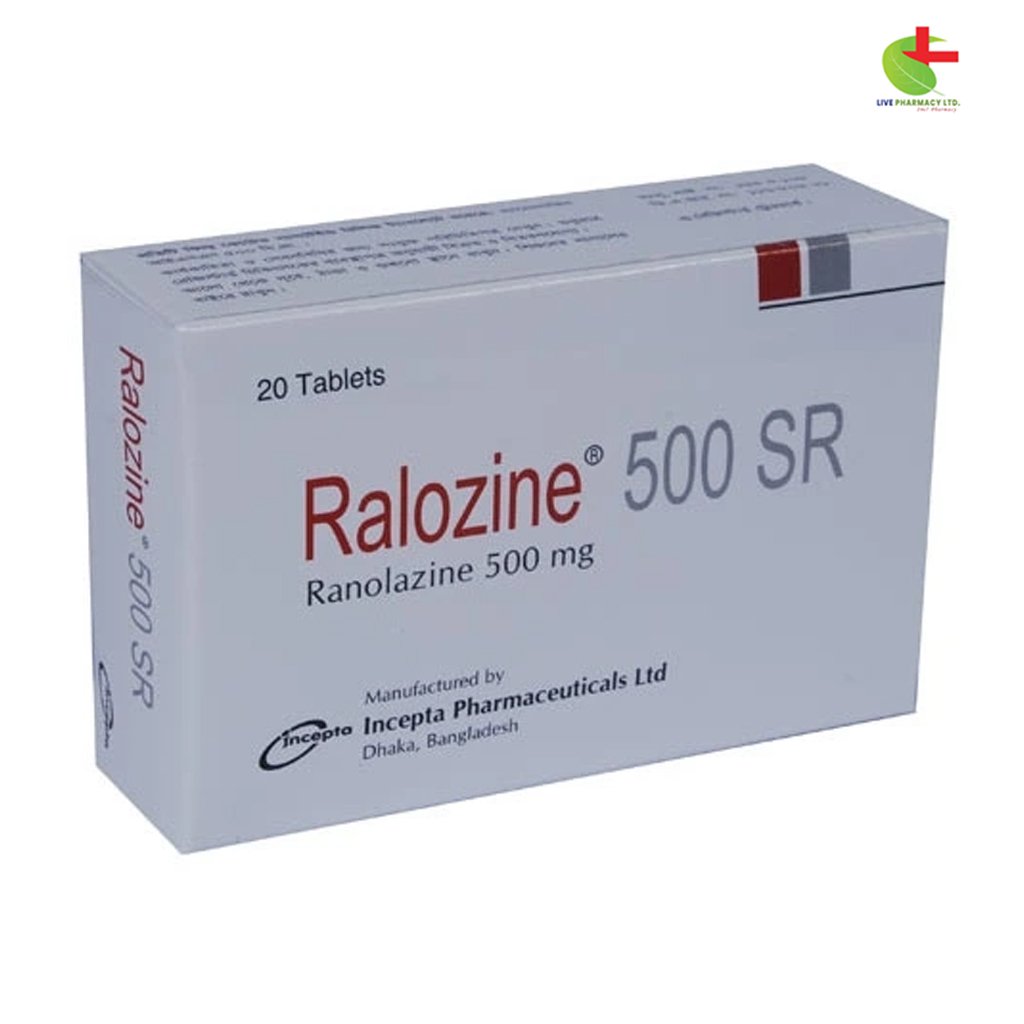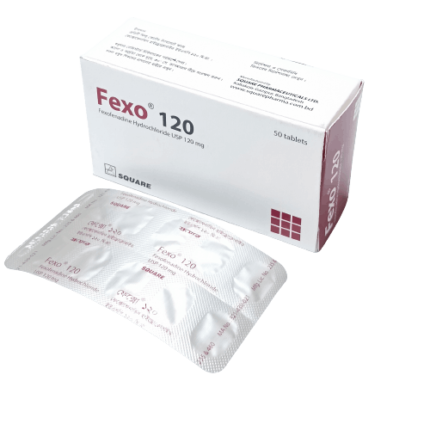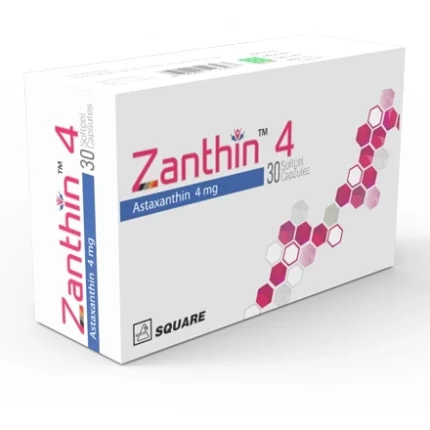Ralozine SR
160.00৳ Strip
- Ralozine SR is used for the treatment of chronic angina in patients with inadequate response to other therapies.
- It improves blood flow to the heart without significantly affecting heart rate or blood pressure.
- Can be used with other heart medications to reduce angina episodes in coronary artery disease patients.
- Must be prescribed with caution due to its effect on the QT interval and potential drug interactions.
 Brand
Brand
|
Incepta Pharmaceuticals Ltd |
|---|---|
 Generics
Generics
|
Ranolazine |
 Type
Type
|
Tablet |
Indications
Ralozine SR is used to manage chronic angina, particularly for patients whose condition hasn’t been adequately controlled with standard antianginal therapies. It can be prescribed in combination with other medications such as beta-blockers, nitrates, calcium channel blockers, anti-platelet drugs, and ACE inhibitors. Studies show Ralozine SR effectively reduces angina episodes in coronary artery disease patients, especially those on maximal amlodipine doses. However, because of its effect on QT interval prolongation, it should be considered only when other treatments do not provide sufficient relief. Notably, the medication may be less effective in women than in men.
Always follow a registered medical professional’s advice.
Pharmacology
Ranolazine, the active ingredient in Ralozine SR, offers both anti-ischemic and anti-anginal effects that do not rely on lowering heart rate or blood pressure. Its exact mechanism is still under investigation but is believed to involve the inhibition of the cardiac late sodium current (INa). This action may play a role in alleviating angina. Additionally, ranolazine extends the QT interval on the ECG, which is linked to its effect on IKr (a potassium channel), prolonging the ventricular action potential.
- Absorption: Peak plasma concentration (Cmax) occurs within 2-5 hours.
- Half-life: Ranges between 6-22 hours.
- Metabolism: Primarily metabolized in the liver through CYP3A and CYP2D6 enzymes.
- Excretion: Approximately 75% of the dose is excreted in the urine, with 25% in feces.
Dosage & Administration
Ralozine SR should be initiated at a dose of 500 mg twice daily. If necessary, the dose can be increased to 1000 mg twice daily, based on individual clinical needs. It can be taken with or without food, but tablets must be swallowed whole—do not crush, break, or chew. The maximum allowable dose is 1000 mg twice a day. If a dose is missed, take the next scheduled dose at the regular time. Do not double the dose.
- Pediatric Use: Safety and effectiveness in children have not been established.
Consult with a healthcare provider before use.
Interaction
- CYP3A Inhibitors: Avoid using Ralozine SR with strong CYP3A inhibitors. With moderate CYP3A inhibitors (such as diltiazem or erythromycin), limit the maximum dose to 500 mg twice daily.
- CYP3A Inducers: Ralozine SR should not be used with CYP3A inducers.
- P-gp Inhibitors: Drugs like cyclosporine may require a dose adjustment of Ralozine SR based on clinical monitoring.
Contraindications
Ralozine SR is contraindicated in patients:
- With existing QT prolongation.
- With significant liver impairment.
- On QT-prolonging drugs or potent CYP3A inhibitors (e.g., ketoconazole, itraconazole).
Side Effects
Common side effects include:
- Cardiac: Bradycardia, palpitations
- Gastrointestinal: Abdominal discomfort, nausea, dry mouth
- Vascular: Hypotension, orthostatic hypotension
- Respiratory: Dyspnea
- Other: Peripheral edema, dizziness, fatigue
Pregnancy & Lactation
- Pregnancy: Category C. Ralozine should be used during pregnancy only if the potential benefit outweighs the potential risk to the fetus.
- Lactation: It is unknown whether Ralozine is excreted in breast milk. It is advised to weigh the risks of nursing with the therapeutic benefits of the drug.
Precautions & Warnings
Ralozine SR should be prescribed with caution in patients with severe hypertension, heart failure, or electrolyte imbalances. The drug is known to block the QT interval, and although clinical trials in acute coronary syndrome patients did not show a significant risk of arrhythmia, care should still be taken when co-administering it with other drugs that affect the QT interval. Regular monitoring is recommended for patients using digoxin, as Ralozine SR can increase its plasma concentration.
Overdose Effects
- Symptoms: Dizziness, nausea, vomiting, confusion, and syncope.
- Management: No specific antidote is available. General supportive care and continuous ECG monitoring are recommended.
Therapeutic Class
Ralozine SR belongs to the class of Anti-anginal and Anti-ischemic medications.
Storage Conditions
Store below 30°C, in a dry place, away from light. Keep out of reach of children.













Reviews
There are no reviews yet.